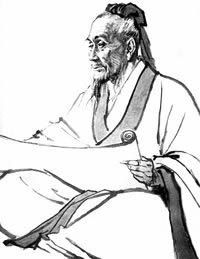Acupuncture and Chinese Herbal Medicine

Wells - 01749 679014
Acupuncture and Chinese Herbal Medicine
Chinese Medicine includes the disciplines of Acupuncture, Chinese herbal medicine, Tui Na, and Qi Gong healing. Perhaps acupuncture is the best known of these disciplines because it has been around in this country for some while. Most people know that it involves the insertion of fine needles into specific points on the body and that it can treat a wide range of ailments; but how?
To understand how , you need to come to terms with a couple of Chinese medicine concepts. The first is the notion of Qi ( Which has now been accepted as a legitimate word in Scrabble, surley the most tangible sign of the acceptance of Chinese Medicine), the second is the idea of channels or meridians,
Qi is basically the force that animates, motivates and generally makes you move through your life. When Chinese medicine was being developed two or three thousand years ago what interested them was what was it that made someone alive. That difference between a live and dead thing was the motivating energy that we call Qi. Obviously, life is in every cell of our body, but it gets there along a series of major channels along the body. When this system is working well and Qi of good quality is flowing in an harmonious way through the body not only will the person be well in terms of an absence of symptoms but they will also be living to their full potential. The needles act as gates or sluices to regulate the flow of energy within an individual, to maximise their potential for healing specifically and life generally
Chinese herbs aim to do pretty much the same thing but obviously in a different way. Over many thousands of years Chinese physicians have worked out the properties of different materials and the effect they have on a persons Qi. Some herbs will increase Qi others will drain away pathogenic or sick Qi, the aim is the same though, to restore a free and even flow of energy to relieve illness and maximise the potential of the individual.
Tui Na looks like a cross between Osteopathy and massage. Practitioners have a variety of unique techniques for restoring the impaired circulation of Qi. In China as preparation for learning this discipline, students are given a bag of rice and are expected to turn it into a bag of rice flour using special pounding and kneading techniques.
Qi Gong is perhaps the most far out therapy in the Chinese cannon. The practitioner uses their own energy to heal others. This may also involve the patient doing some prescribed exercises or passively receiving the practitioners Qi. Its not far away from our Western tradition of spiritual healing and can look pretty similar when being done.
An important point to bear in mind is that every individual is seen as being unique and needs to be treated as such. Your individual energetic make up will be different to the next persons and even though two people may have the same symptoms, because of their uniqueness, they may need to be treated entirely differently. This is the main reason why when you come and see someone like myself what happens initially is I take as full a case history as I can. I need to know as much as I can about what is happening for you at the moment and how that situation came to be. With that information I make as accurate a diagnosis as possible to make the treatment as specifict to you as possible.
